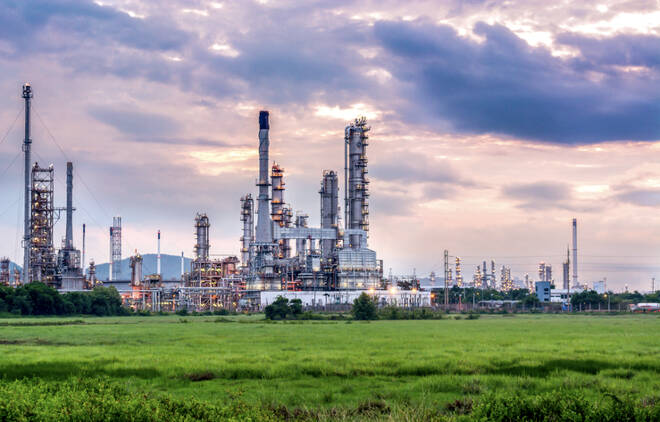Advertisement
Advertisement
Natural Gas Price Fundamental Daily Forecast – Traders Weighing EIA Report Against Positive LNG Demand Data
By:
Light national demand due to cool to comfortable weather patterns combined with a large storage build should be enough to cap gains.
Natural gas futures are trading flat to lower early Thursday as traders await the release of the latest weekly government storage report at 14:30 GMT. Yesterday, the market posted a choppy, two-sided trade before closing higher as traders weighed positive export data against forecasts calling for cooler temperatures, a potentially bearish weekly storage report and rising fall containment concerns.
At 10:16 GMT, November natural gas is trading $2.861, down $0.012 or -0.42%.
LNG Demand Updates
The market is garnering some support this week from encouraging U.S. liquefied natural gas (LNG) export news. Basically, we’re finally seeing movement after Hurricane Laura shutdown operations.
Feed gas flows at Cheniere’s Sabine Pass export terminal jumped above 2 Bcf Tuesday. That pushed the total for all Lower 48 terminals above 6 Bcf, “higher than we have seen since the middle of May,” Bespoke Weather Services said.
Feed gas supply to Sabine Pass rose to 2.84 Bcf/d Wednesday, “pointing to the resumption of exports,” Clipper Data noted.
Short-Term Weather Outlook
According to NatGasWeather for September 10, “An unseasonably cool weather system will fizzle over the Rockies and Plains, the next few days with temperatures of 50s and 60s the next couple days, then warming into the 60s and 70s. The East remains warm with highs of 70s to low 90s, while hot over the West with upper 80s to 100s. The Southern US will be very warm to hot with highs of upper 80s to lower 90s, except hotter 100s in the Southwest and California.”
Energy Information Administration Weekly Storage Report
According to Natural Gas Intelligence (NGI), “For Thursday’s U.S. Energy Information Administration (EIA) storage report covering the week ended Sept 4, a Bloomberg survey found estimates ranging from 60 Bcf to 73 Bcf, with a median of 68 Bcf, while a Reuters poll found estimates ranging from 62 Bcf to 73 Bcf and a median of 69 Bcf. NGI estimated an injection of 71 Bcf.
Daily Forecast
Light national demand due to cool to comfortable weather patterns combined with a large storage build should be enough to cap gains, but increasing LNG demand could provide support. This suggests a rangebound trade.
LNG is likely to be the key market driver over the near-term. The speed at which energy firms can get production up to pre-Hurricane levels could determine whether we have a fall shoulder season rally because without excessive heat, storage levels will continue to build ahead of the winter heating season, leading to containment issues.
For a look at all of today’s economic events, check out our economic calendar.
About the Author
James Hyerczykauthor
James Hyerczyk is a U.S. based seasoned technical analyst and educator with over 40 years of experience in market analysis and trading, specializing in chart patterns and price movement. He is the author of two books on technical analysis and has a background in both futures and stock markets.
Latest news and analysis
Advertisement
